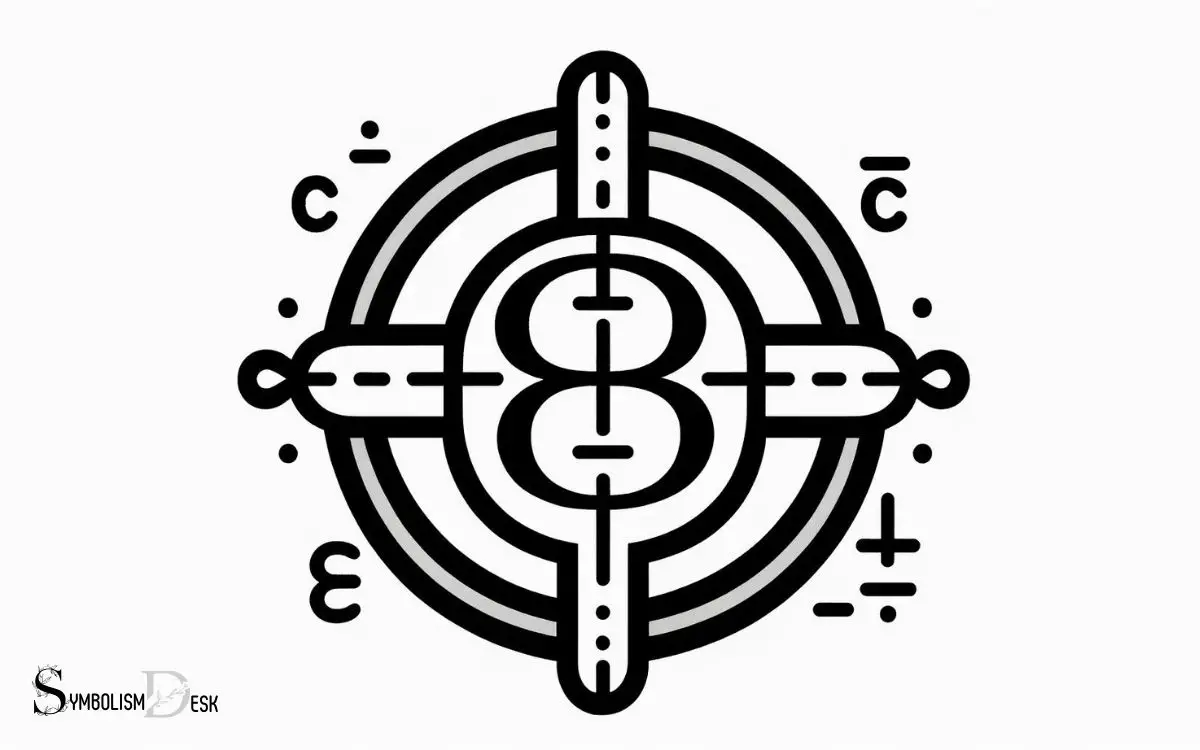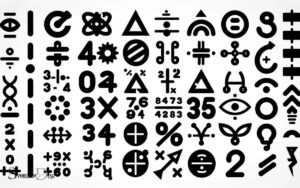Belongs to Symbol in Math’s: Algebra!
The “belongs to” symbol (∈) is a mathematical notation used to express that a specific element is a member of a set.
It is a key component in the language of set theory and is widely used across various branches of mathematics, including algebra, number theory, and discrete mathematics.
Recognizing the symbol and understanding its application is vital for anyone studying mathematics at any level.
The ∈ symbol is foundational in set theory, a branch of mathematical logic that studies collections of objects, known as sets.
The symbol is straightforward to use:
- If we have a set A = {1, 2, 3} and an element x = 2, we write x ∈ A to indicate that x is a member of set A.
Here is a basic example to illustrate this:
Let S be a set defined as S = {a, b, c}. – If we take an element e, such as e = ‘a’, we can express that ‘a’ is in set S with the notation e ∈ S.
Unlock the language of sets with the “belongs to” symbol, a cornerstone of mathematical communication.

Key Takeaway
Understanding the “Belongs To” (∈) Symbol in Set Theory and Mathematics
| Symbol | Meaning | Example | Context |
| ∈ | Element is a member of a set | 4 ∈ {1, 2, 3, 4} | Set Theory |
| ∉ | Element is not a member of a set | 5 ∉ {1, 2, 3, 4} | Set Theory |
| ⊆ | A set is a subset of another set | {2, 3} ⊆ {1, 2, 3, 4} | Set Theory |
| ⊂ | A set is a proper subset of another set | {2, 3} ⊂ {1, 2, 3, 4} | Set Theory |
| ∪ | Union of two sets | {1, 2} ∪ {3, 4} = {1, 2, 3, 4} | Set Operations |
| ∩ | Intersection of two sets | {1, 2} ∩ {2, 3} = {2} | Set Operations |
| – | Difference of two sets | {1, 2, 3} – {2} = {1, 3} | Set Operations |
| × | Cartesian product of sets | {1, 2} × {3, 4} = {(1,3), (1,4), (2,3), (2,4)} | Set Operations |
Origin and Meaning of ∈ Symbol
The symbol ‘∈’ in mathematics, denoting set membership, is believed to have originated in the late 19th century. It was introduced by Giuseppe Peano, an Italian mathematician, in his work “Principles of Mathematical Logic” in 1889.
The symbol is derived from the Latin word “est,” meaning “is.” When used in set theory, ‘∈’ indicates that the specified element is a member of a particular set. For example, if x ∈ A, it signifies that element x is part of set A.
This notation provides a concise and clear way to express the relationship between elements and sets, forming the foundation for various mathematical operations and proofs.
Its adoption has been instrumental in enhancing the precision and clarity of mathematical discourse, making it an indispensable symbol in the field of mathematics.
Usage in Set Theory
In set theory, the belongs to symbol (∈) is used to indicate membership within a set. It is employed to denote whether an element is included or excluded from a particular set.
Additionally, the symbol is utilized to illustrate relationships between different sets, providing a clear representation of set inclusion and exclusion.
Represents Membership in Sets
Symbolized by the character ‘∈’, the belongs to symbol in set theory denotes the membership of an element in a set.
In set theory, this symbol is used to express that an element belongs to a particular set. For instance, if ‘x’ is an element of set ‘A’, it would be denoted as ‘x ∈ A’.
This notation is crucial for defining relationships between elements and sets, forming the foundation of set theory and mathematical logic.
| Element | Set |
|---|---|
| x | A |
| y | B |
| z | C |
| w | D |
| v | E |
The table above illustrates the membership of elements in respective sets, demonstrating the practical application of the belongs to symbol in representing the relationships between elements and sets.
Denotes Inclusion or Exclusion
Expressing the presence or absence of an element within a set, the belongs to symbol ‘∈’ in set theory indicates inclusion or exclusion. In set theory, the symbol ‘∈’ is used to denote that an element is included in a particular set.
For example, if ‘x’ is an element of set ‘A’, it is represented as ‘x ∈ A’. This signifies that ‘x’ belongs to the set ‘A’. On the other hand, if ‘x’ is not an element of set ‘A’, it is denoted as ‘x ∉ A’, indicating exclusion.
The belongs to symbol plays a crucial role in defining the membership and non-membership of elements within sets, forming the foundation for various set operations and relationships in mathematics. The use of the belongs to symbol (∈) allows mathematicians to easily identify which elements are part of a specific set and which are not, enabling further analysis and manipulation of the data. This symbol provides a clear and concise way to communicate the presence or absence of elements within sets, making it an essential tool for understanding mathematical coefficients and their relationships within different sets and equations. By utilizing the belongs to symbol, mathematicians can gain a deeper understanding of the complex structure and interactions within sets, leading to the development of new mathematical concepts and principles.
Its precise usage helps in accurately defining the contents of sets and their relationships with other mathematical entities.
Indicates Set Relationships
The belongs to symbol ‘∈’ in set theory serves as a fundamental tool for defining and understanding the relationships between elements and sets.
It indicates whether an element is a member of a particular set or not. This is crucial for establishing connections and distinctions within mathematical contexts.
The usage of the belongs to symbol can evoke various emotions in the audience, such as:
- Clarity in defining set membership
- Precision in indicating specific relationships
- Understanding the inclusion of elements in sets
- Logical delineation of set boundaries
- Clear representation of set relationships
Understanding the significance of the belongs to symbol is essential for its application in mathematical equations, which will be discussed in the subsequent section.
Representation in Mathematical Equations
Representation of belonging in mathematical equations is essential for accurately expressing the relationship between elements.
In mathematical notation, the symbol “∈” signifies that an element belongs to a particular set, while “∉” indicates that the element does not belong to the set. This distinction is crucial for defining and understanding relationships within mathematical expressions.
The following table illustrates the representation of belonging in mathematical equations:
| Belongs to Symbol | Mathematical Notation |
|---|---|
| Element belongs to set | x ∈ A |
| Element does not belong to set | y ∉ B |
This clear representation allows for precise communication of set relationships within mathematical equations, enabling mathematicians and students to accurately convey and comprehend the relationships between elements and sets.
Application in Number Theory
Analyze how the belonging symbol is applied in number theory to elucidate relationships among numerical elements and sets. In number theory, the belonging symbol is used to establish connections and categorize numbers based on their properties.
This application aids in identifying prime numbers, perfect numbers, and other significant number types, providing a framework for understanding their characteristics and behaviors.
The belonging symbol also assists in defining various sets of numbers, such as natural numbers, integers, rational numbers, and irrational numbers, allowing for a comprehensive classification of numerical entities.
Its utilization in number theory facilitates the exploration of divisibility, congruences, and mathematical patterns, contributing to the advancement of mathematical knowledge and problem-solving techniques.
- Explore the fascinating world of prime numbers and their intricate properties.
- Understand the significance of perfect numbers and their unique attributes.
- Delve into the classification of numbers and the relationships between different number sets.
- Discover the role of the belonging symbol in identifying rational and irrational numbers.
- Appreciate the contribution of the belonging symbol to uncovering mathematical patterns and relationships.
Inclusion in Venn Diagrams
Frequently, the belonging symbol is depicted within Venn diagrams to illustrate relationships between sets in mathematics. In Venn diagrams, the inclusion of sets is visually represented by the positioning of circles or other shapes within the boundaries of one another.
When one set is completely encompassed by another, it demonstrates that all elements of the first set are also elements of the second set. This visual representation aids in understanding the concept of inclusion and the relationships between different sets.
It is particularly useful in demonstrating concepts such as subsets, proper subsets, and overlapping sets.
The clarity provided by Venn diagrams makes them a valuable tool for comprehending set theory and the relationships between sets in various mathematical contexts.
Notation in Discrete Mathematics
The use of set notation in discrete mathematics is essential for precisely defining and manipulating the relationships between different sets. In discrete mathematics, set notation allows for the clear representation of elements and their relationships within sets.
It provides a concise and unambiguous way to express concepts and operations, aiding in the effective communication of mathematical ideas.
The use of notation in discrete mathematics fosters a deeper understanding of set theory and its applications in various fields. It enables the formulation of rigorous proofs and the development of efficient algorithms.
Furthermore, set notation facilitates the identification of patterns and structures within sets, leading to insights and discoveries in the realm of discrete mathematics.
- It provides a framework for rigorous reasoning and logical deduction.
- It enables the concise representation of complex relationships between sets.
- It fosters a deeper understanding of mathematical concepts and their applications.
- It aids in the development of efficient algorithms and problem-solving strategies.
- It facilitates the discovery of patterns and structures within sets.
E Symbol in Math Sets
In mathematics, the symbol “E” is often used to represent an element or membership relation between an element and a set. This symbol is sometimes written as “∈” and is read as “is an element of” or “belongs to.”
For example, if you have a set A and an element x, you can express that x is an element of set A using the “∈” symbol like this:
x ∈ A
This notation indicates that x is a member of, or belongs to, the set A. If x is not an element of A, you would write it as:
x ∉ A
This symbol is used to describe the relationship between individual elements and sets in various mathematical contexts, such as set theory, logic, and algebra. It is a fundamental concept in understanding how elements are related to sets in mathematics.
Conclusion
The symbol ∈, belonging to set theory, is widely used in mathematics to denote membership of an element in a set. Its origins and meanings are deeply rooted in mathematical theories and it plays a crucial role in various mathematical equations, number theory, and Venn diagrams.
Its representation in discrete mathematics further solidifies its significance in the field of mathematics. Like a key to a lock, the symbol ∈ unlocks the understanding of set membership in mathematics.






